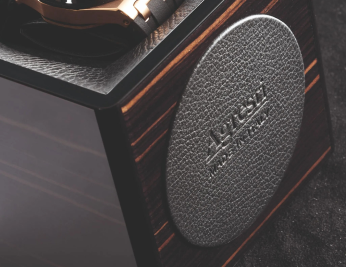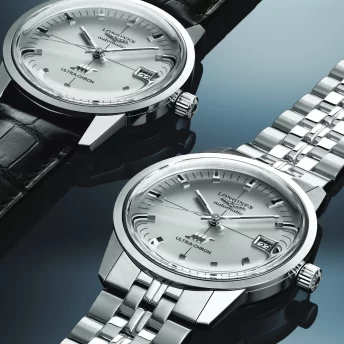A thin but precious thread, the one that connects heaven and earth. We are talking about wristwatches with GMT, which have a history closely linked to the needs of navigation and the advent of long-haul flights.
From their creation for pilots to their use by watch enthusiasts and travelers around the world, timepieces with additional time zones have become icons of precision and style.
The historical context
To understand the origin of GMT clocks, it is essential to look at the historical context that gave rise to the concept of time zones. Until the mid-19th century, time was local, determined by the position of the sun.

However, the introduction of railroads and large-scale transportation necessitated greater uniformity in the calculation of time. In 1884, the International Meridian Conference in Washington, D.C., established theGreenwich Mean Time (GMT) meridian as the universal reference for measuring time, with the creation of time zones around the world.
With the expansion of air travel during the mid-20th century, the need arose for a system that would allow pilots and travelers to monitor multiple time zones simultaneously. The first intercontinental air routes, which crossed several time zones, posed considerable challenges to time management, especially for pilots who had to coordinate with airports located in different parts of the world. This need paved the way for the birth of the first wristwatch with GMT function.
Longines Zulu Time GMT
The company with the winged hourglass, was the pioneer of dual time zone watches. With the name “Zulu Time,” synonymous with the universal coordinated time UTC or the Greenwich time zone conventionally regarded as the zero meridian, was christened the first dual time zone wristwatch from Longines that came out in 1925 which displayed on the dial the Zulu military alphabet symbol referring to the letter Z (small flag below the Longines logo) .

It is the first wristwatch on which the four spheres typical of GMT watches appear for the first time; the first, of the hours, the second, of the minutes, the third (small) of the seconds and then the fourth for the time zone.

Its direct successor was the Longines Weems Second-Setting Watch, first introduced in 1933. Its main purpose was to help pilots and navigators calculate time with extreme accuracy during flights and crossings, a basic requirement for determining the correct position while navigating.

Philip Van Horn Weems, a U.S. Navy officer, developed a system that allowed the clock time to be corrected based on radio signals, thus improving accuracy in calculating position.

The special feature of the Weems then, was a rotating inner dial (via a small crown at 4 o’clock) that allowed the watch to be precisely synchronized with time signals transmitted by radio. This feature allowed the time to be precisely adjusted without having to stop the watch itself, a crucial feature for navigators, who could not afford interruptions in timekeeping during their travels.

Just from that year on, many aviators used Longines wristwatches during their exploits, and among them was the famous Amy Johnson, the first woman to undertake a solo flight from England to Australia in the 1930s.

In 1931 occurred the historic nonstop trans-Pacific flight made by pilots Clyde Pangborn and Hugh Herndon with the help of a Longines dual time-zone dashboard clock. To save weight and increase fuel efficiency, the two removed the plane’s undercarriage and fortunately on the return trip they got away with a few scratches despite the ruinous landing. So from its earliest days, the Maison has inextricably linked its destiny to the world of aviation.
Glycine Airman GMT

The Glycine Airman was first launched in 1953, a time when commercial aviation was experiencing explosive growth and the demand for watches with specific functions for pilots was increasing.
The idea behind this multifunctional timepiece arose from this very need: pilots needed to keep track of multiple time zones during intercontinental flights, and traditional watches were not practical enough for this purpose.
The story goes that the concept for the Airman was born through a trip by Glycine founder Samuel W. Glur, to the United States. During a conversation with an American pilot, he was asked if it was possible to make a watch that would simultaneously show local time and the time in another time zone. This meeting became the catalyst for the development of the model that would later become the Glycine Airman.
The first reference of the Glycine Airman was a self-winding watch with a very simple but innovative GMT function for the time. The dial showed 24 hours instead of the traditional 12, thus allowing a direct time reading in a day/night format. A distinctive design feature was the rotating bezel with the 24 engraved numerals, which could be locked via a small screw-down crown located at 4 o’clock.

This function allowed the pilot to track the time of two different time zones: one shown by the hands and the other indicated by the bezel. Because of this, the Airman quickly became popular among airline pilots, particularly during the golden age of commercial flight.
In particular, it became popular among American military pilots during the Vietnam War. Many of them chose it for its ruggedness, reliability, and its ability to display the time in 24-hour format, which was essential during night and daytime flying missions.
Mind you, however, what distinguishes it from its successor, the Rolex GMT-Master, is the time zone display, for the “crowned” instead of mounting only the 24-hour scale on the bezel, it also mounted a GMT complication inside the mechanism and this could be seen from the fourth hour sphere inside the dial.
Rolex GMT-Master

Developed by the crowned house in the mid-1950s, it was the model that made this feature widespread and beloved by collectors. The Rolex GMT-Master was created at the request of Pan American World Airways, better known as Pan Am, one of the most important airlines of the time. Pan Am needed a watch that would allow its pilots to keep track of both their takeoff time (tied to the GMT reference time zone) and their location time.

Introduced in 1955, it was designed with a dial that showed both local and GMT time. This was made possible by the inclusion of an additional hand, which made one full rotation of the dial every 24 hours, and a bidirectional rotating bezel. The bezel, divided into two colors (day and night), made it easy to adjust the watch to take into account the time zone one was in.
Serving as the guinea pig for the creation of the first prototype of the GMT-Master was the Oyster case of Submariner model ref.6204 with a water resistance of 50 meters, which at the time was by no means a small amount.

The design of the GMT-Master proved revolutionary; not only was it functional, but it quickly became a status symbol, with its iconic (bakelite)“Pepsi bezel,” featuring the colors red and blue, which immediately hinted at the image of the Pan Am airline.
Although originally designed for pilots, this watch was quickly appreciated by travelers and professionals working in international environments, making it one of the most beloved models in the Rolex collection.

In 1982, Rolex introduced an updated version of the GMT-Master: the GMT-Master II. This new model retained the iconic aesthetic of the previous version, but introduced a major technical improvement: the ability to adjust the hour hand independently, without having to stop the entire movement. This innovation made the watch even more practical for frequent travelers, allowing them to quickly change the local time zone without losing the reference GMT time.

Over the years, the GMT-Master II has been made in several versions, with variations in materials and design, from traditional stainless steel to solid gold. The bezel was offered in a range of color combinations, including black-green, black-blue (nicknamed “Batman”) and the more recent “Root Beer,” with brown and gold tones. These models have continued to strengthen the GMT-Master’s reputation as an icon among wristwatches with GMT functions.
The GMT function in the modern era
Today, the GMT function is no longer just a necessity for pilots and frequent travelers, but also a symbol of status and versatility. GMT watches are appreciated by anyone working in international environments or simply by those who love the technical design of these timepieces.
The ability to track multiple time zones at a glance on the wrist has become synonymous with sophistication, with that extra technological “feel” that distinguishes a complicated watch from a time-only. The range of options available, from luxury to more affordable watches, has made the GMT a must-have in the world of watchmaking.
Although Rolex has cleared the “dual time zone watch” concept, many other fine watch brands have developed their own GMT models, helping to diversify the landscape of these timepieces. Among the most significant brands, we can mention Omega with its Seamaster GMT, Breitling Navitaimer GMT, Tudor Black Bay GMT, and Patek Philippe Calatrava Pilot Travel Time, each of which has left an indelible mark with their creations.
Conclusions
The history of GMT wristwatches is a fascinating journey through decades of technical and stylistic innovation. Created to meet the needs of civil and military aviation pilots, this type of watch has become a global icon, prized both for its utility and unmistakable design.
From the introduction of the first dual time zone timepieces to contemporary models, the GMT function continues to represent a perfect combination of precision, functionality and style.
Visit our Youtube channel to experience the best of the world of watchmaking firsthand.
For all real-time updates follow us on Instagram.













